


xxxxxIt was in 1845 that the English astronomer and mathematician John Couch Adams deduced that the variations in the positions of the planet Uranus were due to the gravitational pull of an undiscovered planet. It was not until close on a year, however, that a search was begun, and during that time the French astronomer Urban Le Verrier had arrived at the same conclusions and sent his calculations to the German astronomer Johann Gottfried Galle. In 1846, using more advanced maps, he found the new planet in a matter of hours. A dispute then arose as to who had made the discovery, but it was eventually agreed that Adams and Le Verrier should share that honour, and that the planet should be named Neptune, after the Roman God of the Sea. During his long tenure as professor of astronomy and geometry at Cambridge, Adams provided a more exact description of the Moon’s motion, observed more closely the Leonid meteor shower, and made a close study of terrestrial magnetism.
JOHN COUCH ADAMS 1819 -
(G3c, G4, W4, Va, Vb, Vc)
Acknowledgements
Adams: detail, by the German-
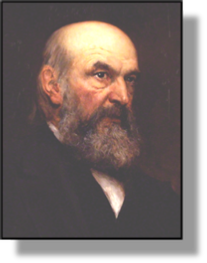
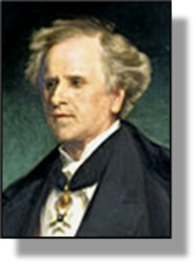 xxxxxIt was in 1841 that the English astronomer and mathematician John Couch Adams (illustrated left) began to investigate variations in the observed positions of the planet Uranus. By 1845 he had deduced by mathematics that these were caused by the gravitational pull of an undiscovered planet. He sent his calculations to the astronomer royal, Sir George Biddell Airy, but, at first, he did not take them seriously, and it was close on a year before the search for the non-
xxxxxIt was in 1841 that the English astronomer and mathematician John Couch Adams (illustrated left) began to investigate variations in the observed positions of the planet Uranus. By 1845 he had deduced by mathematics that these were caused by the gravitational pull of an undiscovered planet. He sent his calculations to the astronomer royal, Sir George Biddell Airy, but, at first, he did not take them seriously, and it was close on a year before the search for the non-
xxxxxInxthe meantime, however, the French astronomer Urbain Le Verrier (1811-
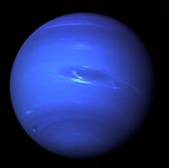 xxxxxThe task of determining credit for the discovery of this major planet, the eighth from the sun, led to an international dispute. The French wanted to give this honour to Le Verrier, and even suggested that the planet be named after him. Following objections from the British and others, the discovery was eventually accredited to both Adams and Le Verrier and, in accordance with normal practice, the planet was given a name from ancient mythology -
xxxxxThe task of determining credit for the discovery of this major planet, the eighth from the sun, led to an international dispute. The French wanted to give this honour to Le Verrier, and even suggested that the planet be named after him. Following objections from the British and others, the discovery was eventually accredited to both Adams and Le Verrier and, in accordance with normal practice, the planet was given a name from ancient mythology -
xxxxxAdams was born in Landeast, Cornwall, and educated at Cambridge University. He was appointed professor of mathematics at the University of St. Andrews, Fife, in 1858, and the following year became Lowndean professor of astronomy and geometry at Cambridge and, in 1861, director of Cambridge observatory, posts he held until his death in 1892. During his long stay at Cambridge, Adams provided a more exact description of the Moon’s motion, observed more closely the Leonid meteor shower, and made a close study of terrestrial magnetism.
xxxxxIncidentally, Adams’ primary role in the discovery of Neptune is confirmed by an entry he made in his journal in July 1841. It read: “Formed a design in the beginning of this week of investigating, as soon as possible after taking my degree, the irregularities in the motion of Uranus … in order to find out whether they may be attributed to the action of an undiscovered planet beyond it ”. ……
xxxxx…… The visual discovery of Neptune in the exact position predicted mathematically finally laid to rest the Titius-
Including:
Friedrich Wilhelm Bessel
and Christian Doppler

xxxxxThe German astronomer Friedrich Wilhelm Bessel (1784-
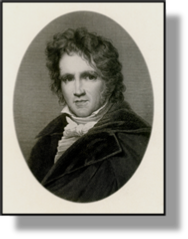 xxxxxAnother outstanding astronomer and mathematician of this period was the German Friedrich Wilhelm Bessel (1784-
xxxxxAnother outstanding astronomer and mathematician of this period was the German Friedrich Wilhelm Bessel (1784-
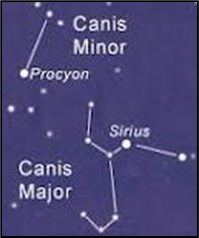 xxxxxEarlier, in 1818, he published Fundamenta Astronomiae, a catalogue of over 3,000 star positions, and, by studying the slight gravitational disturbances in the motions of Sirius and Procyon (the so-
xxxxxEarlier, in 1818, he published Fundamenta Astronomiae, a catalogue of over 3,000 star positions, and, by studying the slight gravitational disturbances in the motions of Sirius and Procyon (the so-
xxxxxBessel was born in Minden and had little formal education. He joined a trading company as an apprentice, and studied a width of subjects in his spare time. While so doing he became particularly interested in astronomy and mathematics, and in 1804 he wrote a paper on Halley’s comet of 1804 and sent it to the German astronomer Heinrich Olbers. He was so impressed that he had the paper published, and he secured Bessel a place as an assistant on the staff of Lilienthal Observatory. Such was his progress that just four years later he was chosen to supervise the construction of the Konigsberg observatory and became its director when it was completed in 1813. Amongst his writings were a large number of papers and Astronomical Observations, published in 1842.
xxxxxIncidentally, the astronomer Heinrich Olbers who, as we have seen, started Bessel on his career, later remarked that his greatest service to astronomy was to recognise Bessel’s outstanding talent and help him on his way.
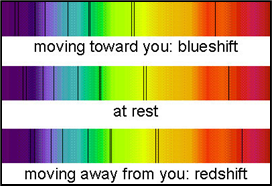
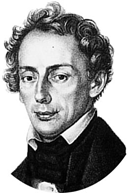 xxxxxAlso published in the same year as Bessel’s Astronomical Observations (1842), and well worthy of mention, was the treatise Concerning the Coloured Light of Double Stars, the work of the Austrian physicist Christian Doppler (1803-
xxxxxAlso published in the same year as Bessel’s Astronomical Observations (1842), and well worthy of mention, was the treatise Concerning the Coloured Light of Double Stars, the work of the Austrian physicist Christian Doppler (1803-
Va-


